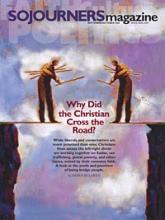The road to Cange, like most roads in Haiti, isnt really a road. Its a strip of gravel and boulders, punctuated by deep potholes that stretch across its width. To the left is mountainside and to the right are huts, some topped with tin roofs and others with dried banana leaves, and beyond those and straight down lies a wide plain, which long ago ceased to produce anything nourishing. Apart from mango trees and a few shrubs, the landscape is desolate. The people who live in this central plateau area are among the poorest in Haiti, a country that is among the poorest in the world.
A few miles to the east lies a different country, lush, with an apparently thriving population. According to the U.S. State Department, the Dominican Republics economy was one of the fastest-growing in the hemisphere over the past decade. More than 80 percent of its population is literate, and life expectancy is over 70 years. In contrast, Haitis economy has actually shrunk. Only half of the people of Haiti can read and write, and extreme poverty and disease - most of it treatable - shorten the life expectancy to about 50. The two countries share the same island; a visitor from another world might wonder, does the sun not shine on Haiti?
Read the Full Article
